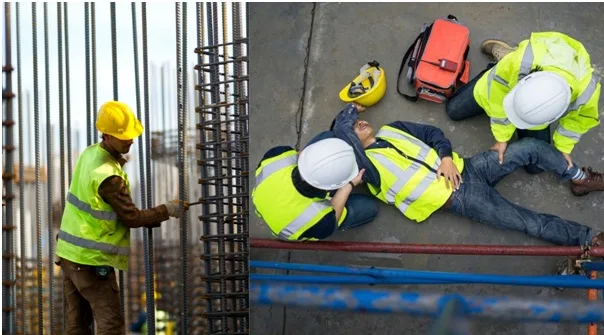Construction accidents occur more often than you think. They can cause serious health issues that may change a person’s life. According to the Bureau of Labor Statistics’ Census of Fatal Occupational Injuries, 1,061 construction workers died, and 293 of them had fatal workplace injuries on a construction site in 2019.
Generally, construction workers encounter various hazards in the workplace, such as electrocutions, falls, being hit by objects, exposure to toxic substances from machinery, explosions, and fire. If you or someone you know was injured in a construction accident, it is important to consult a construction accident attorney for legal assistance.
As a construction worker, have you ever been injured at the construction site? If yes, you may be wondering whether you are eligible to get compensation. It is not easy to prove negligence. To prove negligence, your claim should meet four elements. The four elements of a construction accident claim that a victim must prove are:
- Duty of Care
- Breach of Duty
- Causation
- Damages
Duty of Care
Duty of care means the legal obligation of employers to take preventive measures to protect employees.
The first element is the duty of care.Injured workers must prove that the employee owed them a duty of care. For construction accidents, everyone may have different duties of care based on their work role. For example:
- Contractors and subcontractors owe a duty of care to their workers and other parties in the construction site. The workers/other parties must perform their work duties under safe conditions, cooperate with other contractors, and be alert of any defects or hazards.
- Employers owe a duty of care to their employees to offer a safe workplace, comply with safety and health regulations, give appropriate training and supervision, and maintain and check machinery and equipment.
- Property developers and owners owe a duty of care to visitors and workers on the construction site to make sure that the premises is reasonably safe and free of hazardous conditions.
Breach of Duty
Breach of duty can be proven by the injured victim that the negligent party failed in their duty of care. For example:
- An employer may breach their duty of care by failing to give their workers appropriate protective gear on the construction site, such as gloves, helmets, or goggles.
- A property owner may breach their duty of care by failing to protect or fence off a construction site, posing a risk to motorists or pedestrians.
- A contractor may breach their duty of care by using faulty or defective tools or materials, which may cause an injury or accident.
Causation
Causation refers to the breach of duty being the proximate or actual cause of the injury or death. Proximate cause means that the death or injury was a natural consequence and a foreseeable breach of duty. For example:
- A contractor using faulty or defective tools or materials may be the proximate and actual cause of the electrocution of workers who were exposed to live wires.
- An employer’s failure to offer sufficient protective equipment may be the proximate and actual cause of head injuries in workers who are hit by a falling object.
- A property owner’s failure to fence or protect a construction site may be the proximate and actual cause of a pedestrian’s injury when they are hit by equipment or debris.
The injured victim has to prove causation based on the injuries they suffered and the negligence of their employers.
Damages
Damages here refer to physical injuries, property damage, and emotional trauma. When it comes to a construction accident, the plaintiff has to prove that the employer’s/contractor’s negligence led to their injuries.Damages are an important element in construction accident claims, as it becomes difficult to seek compensation if the plaintiff was not injured or suffered property damage. A few examples are mentioned below.
- The property owner, contractor, or supervisor can be held liable if debris from the construction site hits a pedestrian’s smartphone. The pedestrian can sue for property damages.
- A worker who was burnedin a fire hazard needs to produce evidence of their burns (either images or medical records) to prove that their injury happened due to employer negligence.
- In an elevator accident, victims or family members of those who lost their lives need to prove that they have suffered injuries/losses due to the accident.
By knowing all four elements of a construction accident claim, you can easily proceed to a construction accident lawyer for further action. An experienced attorney can help you build a strong case. After a construction accident, you may be at home or admitted to the hospital. A construction accident attorney will take complete care of the legal process while you concentrate on your recovery.


